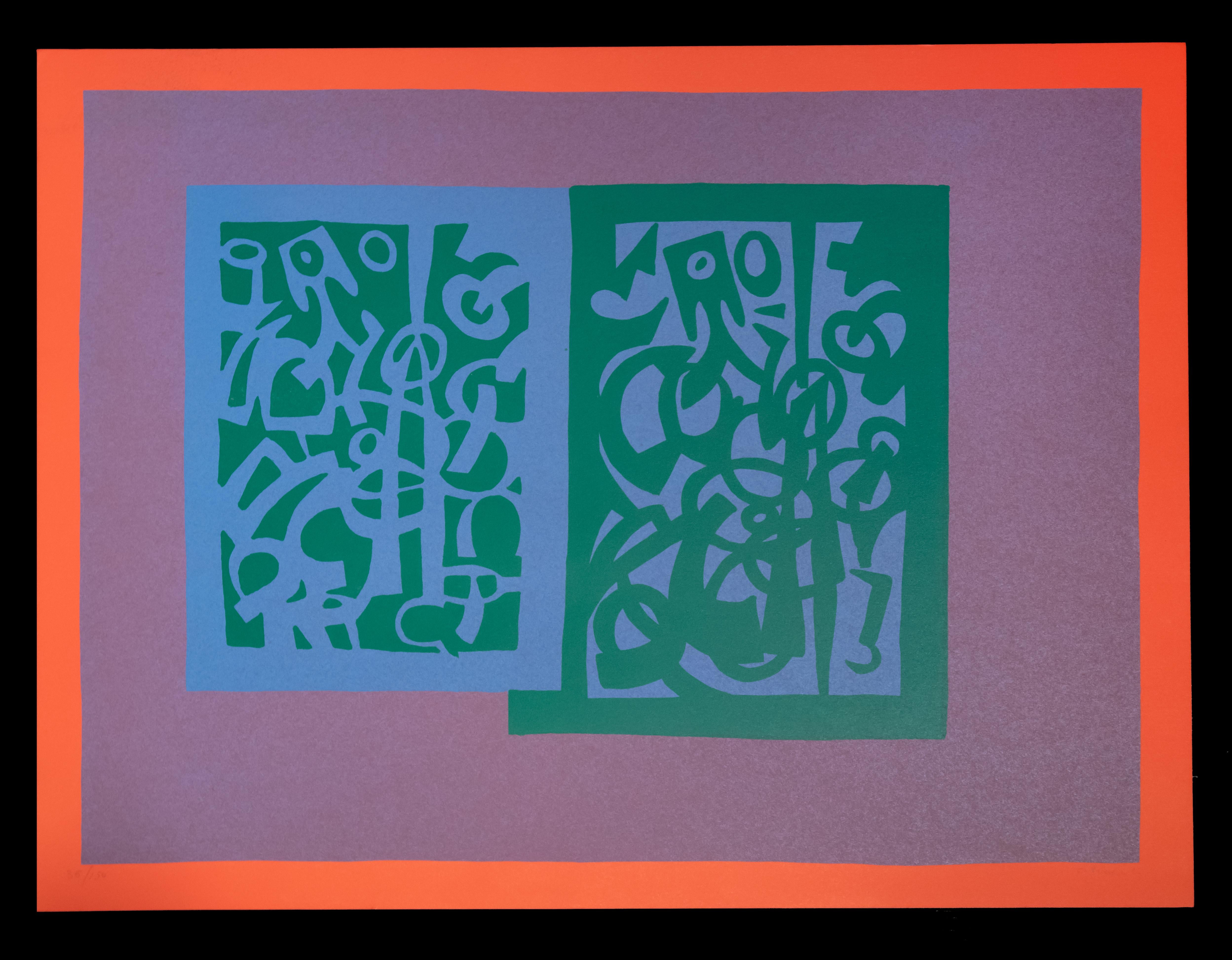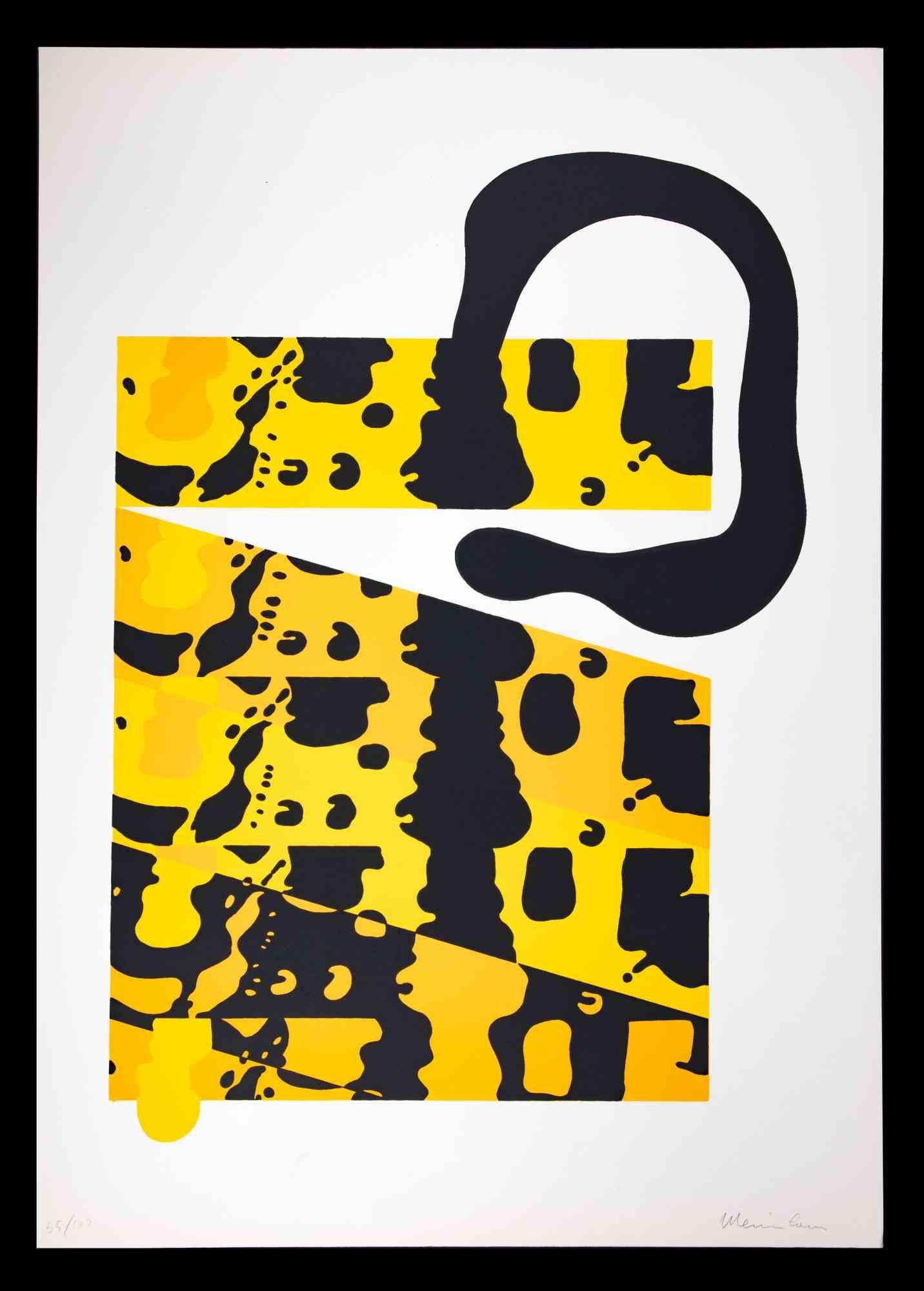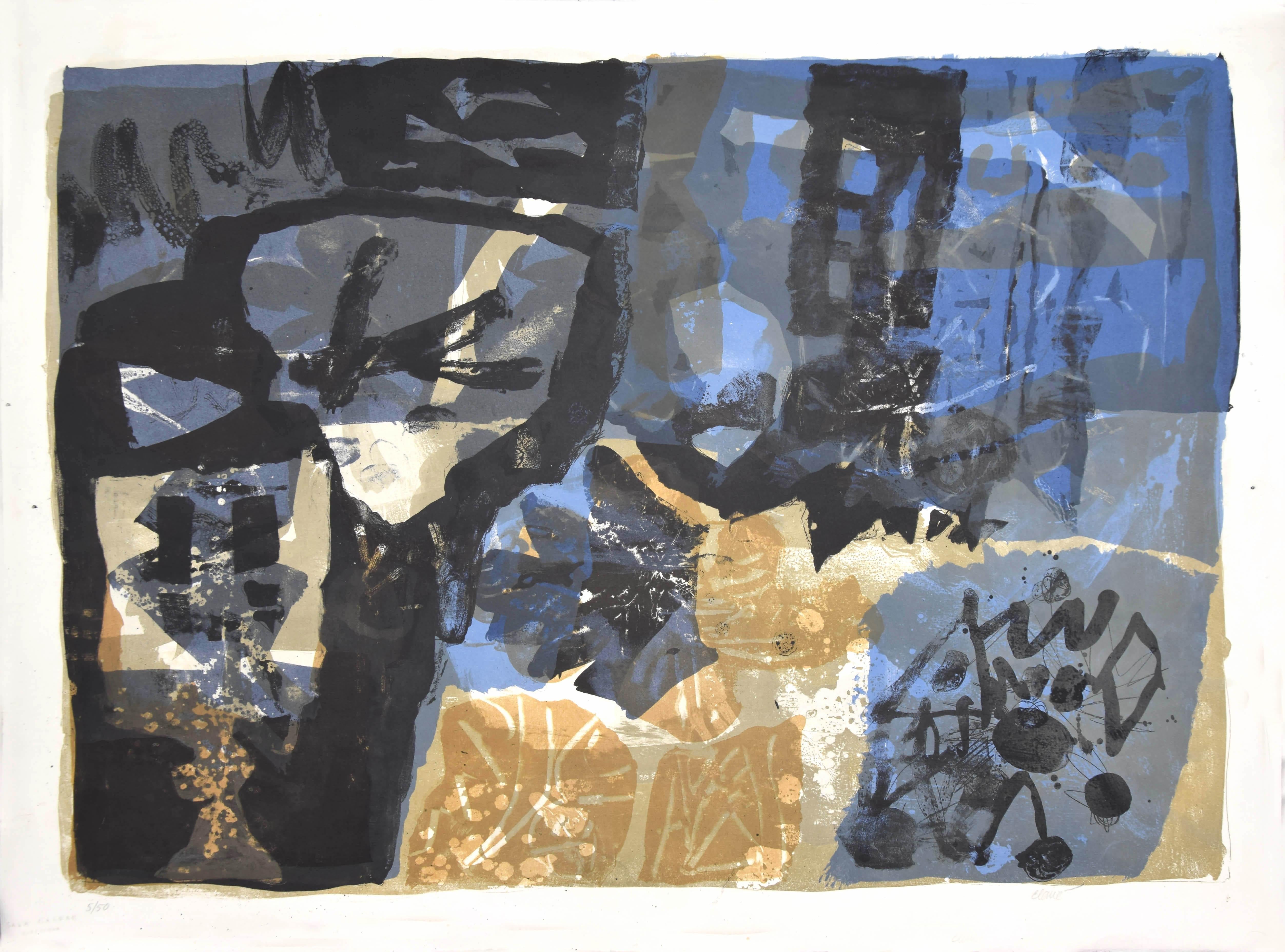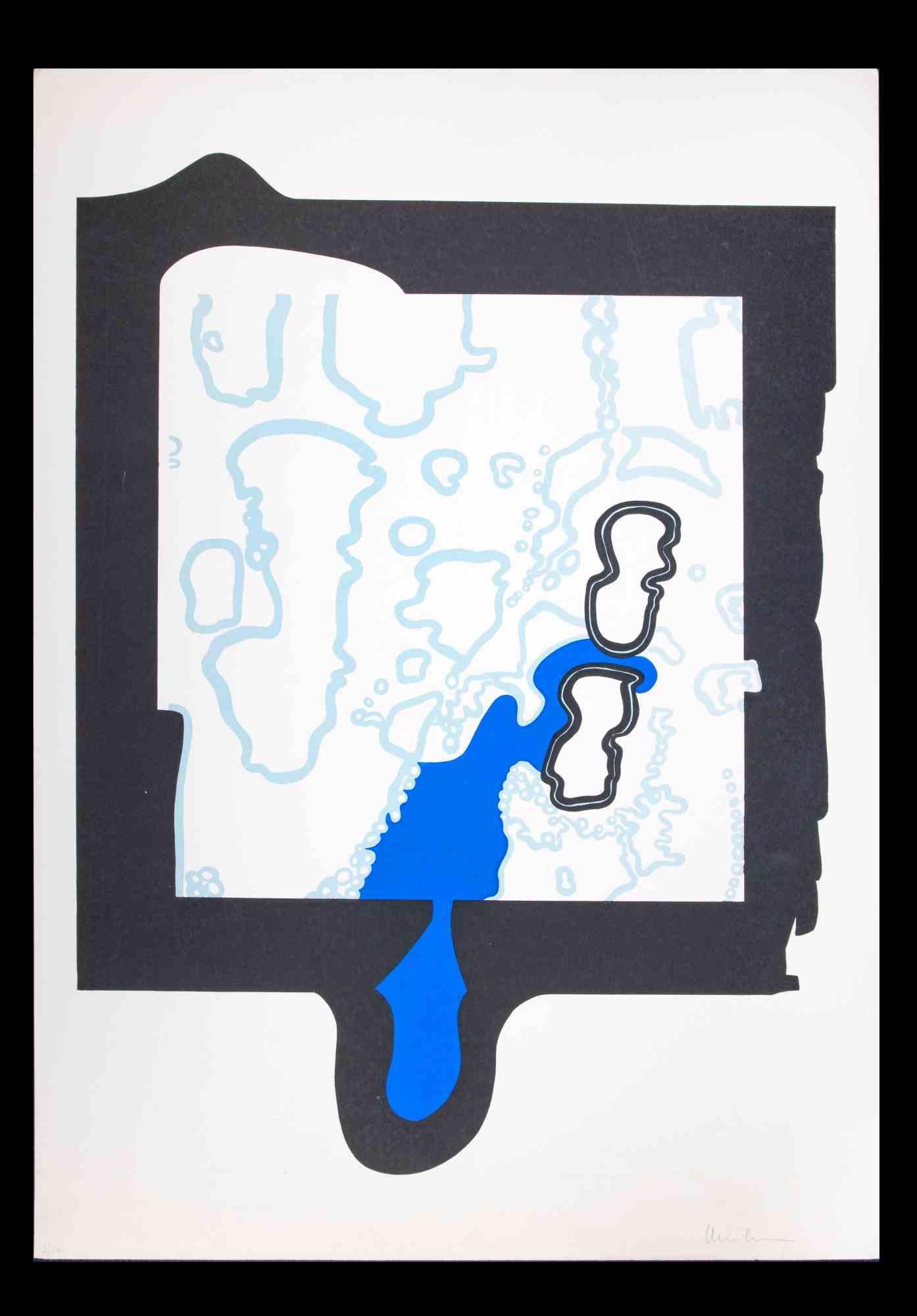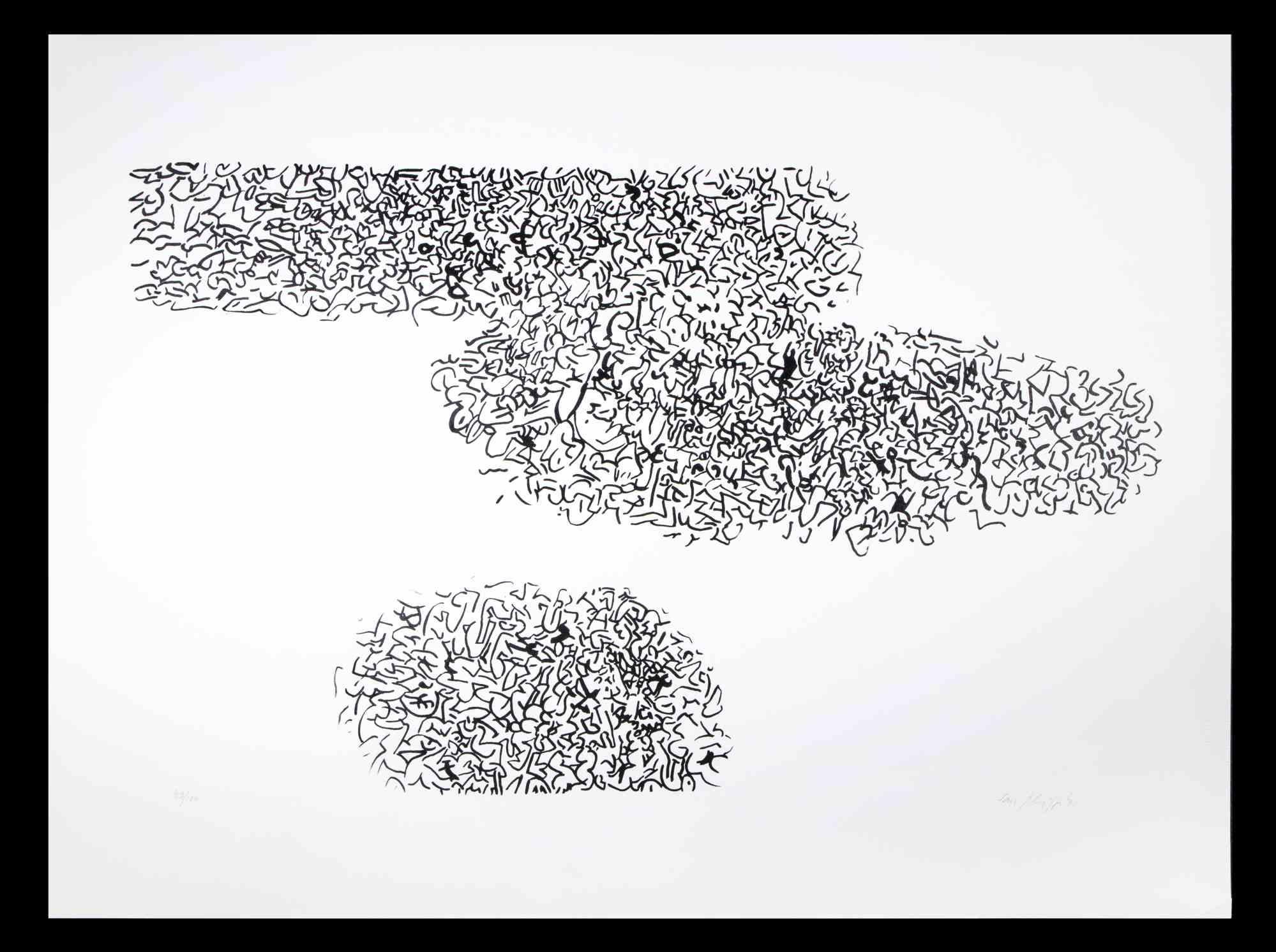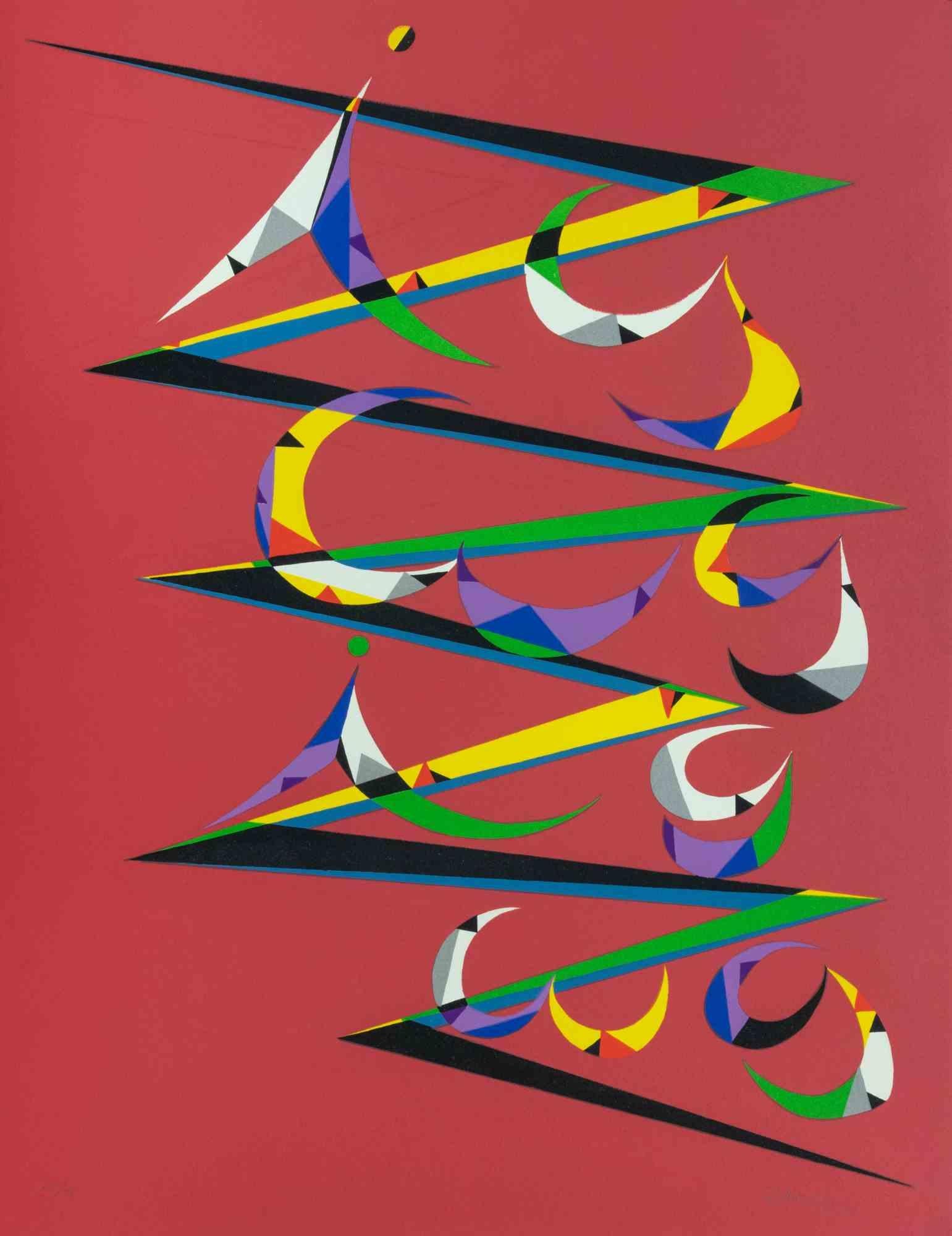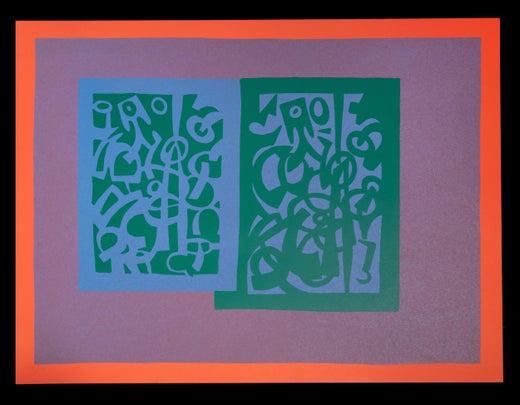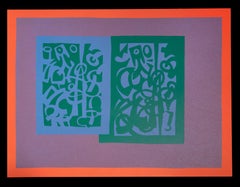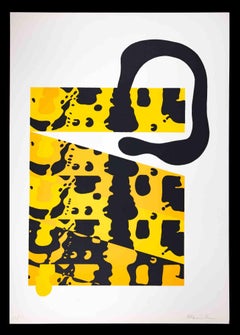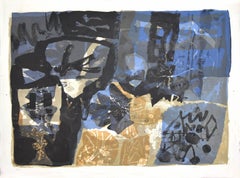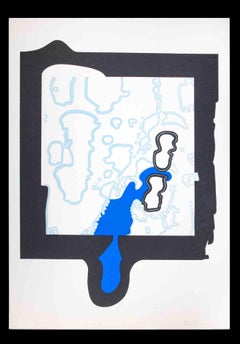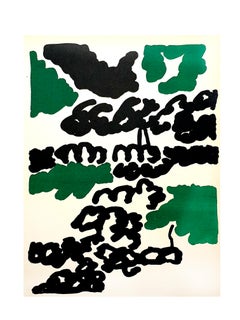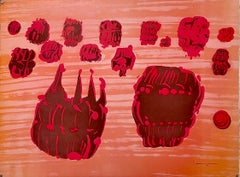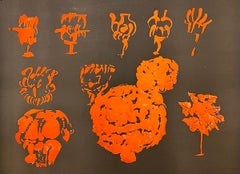Items Similar to Abstract Composition - Lithograph by Carla Accardi - 1970 ca.
Want more images or videos?
Request additional images or videos from the seller
1 of 5
Carla AccardiAbstract Composition - Lithograph by Carla Accardi - 1970 ca.1970
1970
$549.19
£405.02
€460
CA$759.06
A$844.13
CHF 443.06
MX$10,293.76
NOK 5,599.34
SEK 5,249.60
DKK 3,502.05
About the Item
Limited edition of 150 pieces, hand signed and numbered.
Excellent conditions.
- Creator:Carla Accardi (1924, Italian)
- Creation Year:1970
- Dimensions:Height: 18.9 in (48 cm)Width: 25.2 in (64 cm)Depth: 0.04 in (1 mm)
- Medium:
- Movement & Style:
- Period:
- Condition:Insurance may be requested by customers as additional service, contact us for more information.
- Gallery Location:Roma, IT
- Reference Number:Seller: J-64614-141stDibs: LU65039675042
Carla Accardi
Already an artist, and among the most representative of the Italian Postwar period, she leaves Florence and arrives in Rome as the only woman of the group Forma 1. She defines herself as a white fly who has managed to follow her vocation “because someone believed in me and that was my father”.
In Rome she meets Pietro Dorazio, Mino Guerrini, Achille Perilli and the younger Giulio Turcato. Occasionally, Severini went to Pietro Consagra’s studio (at that time he is a guest of Renato Guttuso in via Margutta 58) who appreciated the group’s works and defined Accardi’s works as full of verve.
In 1947 the artist creates her first abstract painting, Scomposizioni (Decompositions) - a general theme for all the artists part of the group - in the Accardi’s artwork there are intersections of triangles.
In the fifties there is her exhibition in Paris and Italy, where she meets the Turin gallery owner Luciano Pistoi, and in the seventies we see her political adhesion to feminism with her friend Carla Lonzi.
Her art was born from the idea that figuration is a transmission of spirituality, to which she arrives with a personal journey marked by meetings with friends such as Consagra, Burri, Fontana. Among the biggest artists, at various times, she has loved Kandinskij or Klee, Mondrian or Matisse.
In the artistic panorama of dualities, between figuration and abstraction, Carla Accardi chooses the Sign. Her work is based on the interaction between sign, surface, light, colour and transparency.
The importance of her sign begins around 1952, when she isolates herself believing that she can no longer do anything in painting, and she starts to draw directly on the ground. She makes some signs. First, she uses white on black, then she starts to draw shapes one on the top of the other - this produces strong differentiated signs. On Accardi’s opinion, the sign is a vent of subconscious and artistic expression, and language too.
A sign exists in relation to others, since it forms a structure with them. Its purpose is to represent the vital impulse that is in the world.
In 1965 it takes place a real revolution in Carla Accardi’s artistic activity, when she starts using different materials. She gives up the physical setting of the painting by realizing her signs on sicofoil supports (transparent and shiny material used in the industrial field) with transparent paints.
The idea of using sicofoil borns out of an interest in transparency - she wants to make her surroundings transparent and, therefore, she researches some colours that can adhere to, without detaching. She searches how to paint with them too.
The process she uses is: to prepare sheets of paper where to draw and to pay attention to the combination and emanation of the light, that derives from the colours.
The return to the rough canvas, as an inspiration of anti-painting, a desire for contradiction, this marks her last phase of artistic production.
About the Seller
4.9
Platinum Seller
Premium sellers with a 4.7+ rating and 24-hour response times
1stDibs seller since 2017
7,655 sales on 1stDibs
Typical response time: 2 hours
- ShippingRetrieving quote...Shipping from: Monaco, Monaco
- Return Policy
Authenticity Guarantee
In the unlikely event there’s an issue with an item’s authenticity, contact us within 1 year for a full refund. DetailsMoney-Back Guarantee
If your item is not as described, is damaged in transit, or does not arrive, contact us within 7 days for a full refund. Details24-Hour Cancellation
You have a 24-hour grace period in which to reconsider your purchase, with no questions asked.Vetted Professional Sellers
Our world-class sellers must adhere to strict standards for service and quality, maintaining the integrity of our listings.Price-Match Guarantee
If you find that a seller listed the same item for a lower price elsewhere, we’ll match it.Trusted Global Delivery
Our best-in-class carrier network provides specialized shipping options worldwide, including custom delivery.More From This Seller
View AllAbstract Composition - Lithograph by Carla Accardi - 1970 ca.
By Carla Accardi
Located in Roma, IT
Limited edition of 150 pieces, hand signed and numbered.
Excellent conditions.
Category
1970s Abstract Abstract Prints
Materials
Lithograph
Abstract Composition - Original Lithograph by Plinio Mesciulam - 1973
By Plinio Mesciulam
Located in Roma, IT
Abstract Composition is an Original screen print realized by Plinio Mesciulam in 1973.
Very good condition on a white cardboard.
Hand-signed and numbered by the artist on the lower...
Category
1970s Abstract Abstract Prints
Materials
Lithograph
Abstract Composition - Lithograph by Antoni Clavé - 1970s
By Antoni Clavé
Located in Roma, IT
Abstract Composition is original lithograph realized by the artist Antoni Clavè.
Hand signed on the lower right margin.
Numbered on the lower left margin. This original print is from an edition of 50.
Good conditions.
Antoni Clavé (Barcelona, 1913 – St. Tropez, 2005)
Antoni Clavé was a Catalan master painter, printmaker, sculptor, stage designer and costume designer. Nominated for two Academy Awards as Best Art Direction and Best Costume Design for his work for a Andersen's movie in 1952.
One of Spain's best known and most celebrated artists, he changed his style, evolving from baroque, ornamental style to a minimal aesthetic. He is best known for his lyrical abstractions, artworks combing paint...
Category
1970s Abstract Abstract Prints
Materials
Lithograph
Abstract Composition - Original Lithograph by Plinio Mesciulam - 1973
By Plinio Mesciulam
Located in Roma, IT
Abstract Composition is an Original Lithograph realized by Plinio Mesciulam in 1973.
Very good condition on a white cardboard.
Hand-signed and numbered by the artist on the lower m...
Category
1970s Abstract Abstract Prints
Materials
Lithograph
Abstract Composition - Original Lithograph by Antonio Sanfilippo - 1971
By Antonio Sanfilippo
Located in Roma, IT
Abstract Composition is an original lithograph artwork realized by Antonio Sanfilippo in 1971.
Hand-signed and dated in pencil on the lower right.
Numbered on the lower right. Edit...
Category
1970s Abstract Abstract Prints
Materials
Lithograph
Abstract Composition - Lithograph by Rafael Alberti - 1972
By Rafael Alberti
Located in Roma, IT
Abstract Composition is a lithograph, realized by Rafael Alberti in 1972.
Hand-signed, dated, numbered on the lower margin.
Edition of 99.
The artwork represents a brilliant compo...
Category
1970s Abstract Abstract Prints
Materials
Lithograph
You May Also Like
Carla Accardi (1924-2014) - Blu - Color lithograph - 2000
By Carla Accardi
Located in Varese, IT
color lithograph , edited in 2000
Limited edition of 99 copies , numbered 85/99 in lower left
Hand signed by Carla Accardi in pencil in the lower right margin
paper size: 70 x 50 cm
...
Category
Early 2000s Abstract Prints and Multiples
Materials
Lithograph
Charles Lapicque - Composition - Original Lithograph
By Charles Lapicque
Located in Collonge Bellerive, Geneve, CH
Charles Lapicque - Composition - Original Lithograph
Published in the deluxe art review, XXe Siecle
1951
Dimensions: 32 x 24 cm
Publisher: G. di San Lazzaro.
Unsigned and unnumbered...
Category
1950s Abstract Expressionist Landscape Prints
Materials
Lithograph
Pietro Consagra Italian Mod Abstract Expressionist Forma Brutalist Lithograph
By Pietro Consagra
Located in Surfside, FL
Pietro Consagra (Italian, 1920-2005).
Hand signed in pencil and numbered limited edition color lithograph on Magnani paper.
Embossed stamp with limited edition numbers in pencil to lower left, and having artist pencil signature to lower right.
(from a limited edition of 80 with 15 artist's proofs)
Published by Stamperia 2RC, Rome Italy and Marlborough Gallery, Rome, Italy.
Abstract Modernist work in colors, produced in the style of the Forma art movement of Postwar Italy, of which the artist was a prominent member.
Pietro Consagra (1920 – 2005) was an Italian Post war artist working in painting, printmaking and sculpture. In 1947 he was among the founding members of the Forma 1 group of artists, proponents of structured abstraction.
Consagra was born on 6 October 1920 in Mazara del Vallo, in the province of Trapani in south-western Sicily, to Luigi Consagra and Maria Lentini. From 1931 he enrolled in a trade school for sailors, studying first to become a mechanic, and later to become a captain. In 1938 he moved to Palermo, where he enrolled in the liceo artistico; despite an attack of tuberculosis, he graduated in 1941, and in the same year signed up at the Accademia di Belle Arti, where he studied sculpture under Archimede Campini. After the Invasion of Sicily and the Allied occupation of Palermo in 1943, Consagra found work as a caricaturist for the American Red Cross club of the city; he also joined the Italian Communist Party. Early in 1944, armed with a letter of introduction from an American officer, he travelled to Rome. There he came into contact with the Sicilian artist Concetto Maugeri, and through him with Renato Guttuso, who was also Sicilian and who introduced him to the intellectual life of the city and to other postwar artists such as Leoncillo Leonardi, Mario Mafai and Giulio Turcato. Consagra signed up at the Accademia di Belle Arti di Roma in September 1944 and studied sculpture there under Michele Guerrisi, but left before completing his diploma.
In 1947, with Carla Accardi, Ugo Attardi, Piero Dorazio, Mino Guerrini, Achille Perilli, Antonio Sanfilippo and Giulio Turcato, Consagra started the artist's group Forma 1, which advocated both Marxism and structured abstraction.
Steadily Consagra's work began to find an audience. Working primarily in metal, and later in marble and wood, his thin, roughly carved reliefs, began to be collected by Peggy Guggenheim and other important patrons of the arts. He showed at the Venice Biennale eleven times between 1950 and 1993, and in 1960 won the sculpture prize at the exhibition. During the 1960s he was associated with the Continuità group, an offshoot of Forma I, and in 1967 taught at the School of Arts in Minneapolis. Large commissions allowed him to begin working on a more monumental scale, and works of his were installed in the courtyard of the Foreign Ministry in Rome and in the European Parliament, Strasbourg. His work is found in the collections of The Tate Gallery, London, in Museo Cantonale d'Arte of Lugano and the Museum of Modern Art, Paris, and the National Gallery of Art in Washington, D.C..
Consagra returned to Sicily where he sculpted a number of significant works during the 1980s. With Senator Ludovico Corrao, he helped created an open-air museum in the new town of Gibellina, after the older town had been destroyed in the earthquake of 1968. Consagra designed the gates to the town's entrance, the building named "Meeting" and the gates to the cemetery, where he was later buried.
In 1952 Consagra published La necessità della scultura ("the need for sculpture"), a response to the essay La scultura lingua morta ("sculpture, a dead language"), published in 1945 by Arturo Martini. Other works include L'agguato c'è ("the snare exists", 1960), and La città frontale ("the frontal city", 1969). His autobiography, Vita Mia, was published by Feltrinelli in 1980. In 1989 a substantial retrospective exhibition of work by Consagra was shown at the Galleria Nazionale d'Arte Moderna in Rome; in 1993 a permanent exhibition of his work was installed there. In 1991 his work was shown in the Hermitage Museum in St. Petersburg. In 2002 the Galerie der Stadt Stuttgart opened a permanent exhibition of his work. He was one of ten artists invited by Giovanni Carandente, along with David Smith, Alexander Calder, Arnaldo Pomodoro, Lynn Chadwick, and Beverly Pepper, to fabricate works in Italsider factories in Italy for an outdoor exhibition, "Sculture nella città", held in Spoleto during the summer of 1962. He was included in the The 1962 International Prize for Sculpture the jury included Argan, Romero Brest and James Johnson Sweeney the former director of the Solomon R. Guggenheim Museum in New York. The participants included Louise Nevelson and John Chamberlain for the United States; Lygia Clark for Brazil; Pietro Consagra, Lucio Fontana, Nino Franchina, and Gió Pomodoro for Italy; Pablo Serrano for Spain; and Eduardo Paolozzi, William Turnbull, and Kenneth Armitage for England. Gyula Kosice, Noemí Gerstein, Julio Gero, Naum Knop...
Category
1960s Abstract Expressionist Abstract Prints
Materials
Lithograph
Pietro Consagra Italian Mod Abstract Expressionist Forma Art Informel Lithograph
By Pietro Consagra
Located in Surfside, FL
Pietro Consagra (Italian, 1920-2005).
Hand signed in pencil and numbered limited edition color lithograph on Magnani paper.
Embossed stamp with limited edition numbers in pencil to lower left, and having artist pencil signature to lower right.
(from a limited edition of 80 with 15 artist's proofs)
Published by Stamperia 2RC, Rome Italy and Marlborough Gallery, Rome, Italy.
Abstract Modernist work in colors, produced in the style of the Forma art movement of Postwar Italy, of which the artist was a prominent member.
Pietro Consagra (1920 – 2005) was an Italian Post war artist working in painting, printmaking and sculpture. In 1947 he was among the founding members of the Forma 1 group of artists, proponents of structured abstraction. (similar to the Art Informel and Art Brut in France and the Brutalist artists)
Consagra was born on 6 October 1920 in Mazara del Vallo, in the province of Trapani in south-western Sicily, to Luigi Consagra and Maria Lentini. From 1931 he enrolled in a trade school for sailors, studying first to become a mechanic, and later to become a captain. In 1938 he moved to Palermo, where he enrolled in the liceo artistico; despite an attack of tuberculosis, he graduated in 1941, and in the same year signed up at the Accademia di Belle Arti, where he studied sculpture under Archimede Campini. After the Invasion of Sicily and the Allied occupation of Palermo in 1943, Consagra found work as a caricaturist for the American Red Cross club of the city; he also joined the Italian Communist Party. Early in 1944, armed with a letter of introduction from an American officer, he travelled to Rome. There he came into contact with the Sicilian artist Concetto Maugeri, and through him with Renato Guttuso, who was also Sicilian and who introduced him to the intellectual life of the city and to other postwar artists such as Leoncillo Leonardi, Mario Mafai and Giulio Turcato. Consagra signed up at the Accademia di Belle Arti di Roma in September 1944 and studied sculpture there under Michele Guerrisi, but left before completing his diploma.
In 1947, with Carla Accardi, Ugo Attardi, Piero Dorazio, Mino Guerrini, Achille Perilli, Antonio Sanfilippo and Giulio Turcato, Consagra started the artist's group Forma 1, which advocated both Marxism and structured abstraction.
Steadily Consagra's work began to find an audience. Working primarily in metal, and later in marble and wood, his thin, roughly carved reliefs, began to be collected by Peggy Guggenheim and other important patrons of the arts. He showed at the Venice Biennale eleven times between 1950 and 1993, and in 1960 won the sculpture prize at the exhibition. During the 1960s he was associated with the Continuità group, an offshoot of Forma I, and in 1967 taught at the School of Arts in Minneapolis. Large commissions allowed him to begin working on a more monumental scale, and works of his were installed in the courtyard of the Foreign Ministry in Rome and in the European Parliament, Strasbourg. His work is found in the collections of The Tate Gallery, London, in Museo Cantonale d'Arte of Lugano and the Museum of Modern Art, Paris, and the National Gallery of Art in Washington, D.C..
Consagra returned to Sicily where he sculpted a number of significant works during the 1980s. With Senator Ludovico Corrao, he helped created an open-air museum in the new town of Gibellina, after the older town had been destroyed in the earthquake of 1968. Consagra designed the gates to the town's entrance, the building named "Meeting" and the gates to the cemetery, where he was later buried.
In 1952 Consagra published La necessità della scultura ("the need for sculpture"), a response to the essay La scultura lingua morta ("sculpture, a dead language"), published in 1945 by Arturo Martini. Other works include L'agguato c'è ("the snare exists", 1960), and La città frontale ("the frontal city", 1969). His autobiography, Vita Mia, was published by Feltrinelli in 1980. In 1989 a substantial retrospective exhibition of work by Consagra was shown at the Galleria Nazionale d'Arte Moderna in Rome; in 1993 a permanent exhibition of his work was installed there. In 1991 his work was shown in the Hermitage Museum in St. Petersburg. In 2002 the Galerie der Stadt Stuttgart opened a permanent exhibition of his work. He was one of ten artists invited by Giovanni Carandente, along with David Smith, Alexander Calder, Arnaldo Pomodoro, Lynn Chadwick, and Beverly Pepper, to fabricate works in Italsider factories in Italy for an outdoor exhibition, "Sculture nella città", held in Spoleto during the summer of 1962. He was included in the The 1962 International Prize for Sculpture the jury included Argan, Romero Brest and James Johnson Sweeney the former director of the Solomon R. Guggenheim Museum in New York. The participants included Louise Nevelson and John Chamberlain for the United States; Lygia Clark for Brazil; Pietro Consagra, Lucio Fontana, Nino Franchina, and Gió Pomodoro for Italy; Pablo Serrano for Spain; and Eduardo Paolozzi, William Turnbull, and Kenneth Armitage for England. Gyula Kosice, Noemí Gerstein, Julio Gero, Naum Knop...
Category
1960s Abstract Expressionist Abstract Prints
Materials
Lithograph
Untitled 4, Abstract Geometric Screenprint by Carmen Cicero
By Carmen Cicero
Located in Long Island City, NY
Artist: Carmen Cicero, American (1926 - )
Title: Untitled 4
Year: circa 1971
Medium: Screenprint, signed and numbered in pencil
Edition: 76
Image Size: 18 x 20 inches
Size: 23 x 24 in.
Category
1970s Abstract Abstract Prints
Materials
Screen
$480 Sale Price
20% Off
20th Century Abstract Signed Lithograph by Mary Anne Rose - Colour Composition
Located in Bristol, GB
COLOUR COMPOSITION
Sheet size: 38 x 30 cm
Image size: 31 x 23.5 cm
Lithograph on paper
A 20th century limited edition (111/230) coloured lithograph by Mary Anne Rose.
It is signed ...
Category
20th Century Abstract Abstract Prints
Materials
Lithograph
